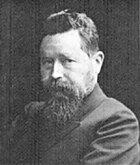German_federal_election,_1919
Federal elections were held in Germany on 19 January 1919,[1] although members of the standing army in the east did not vote until 2 February. The elections were the first of the new Weimar Republic, which had been established after World War I and the Revolution of 1918–19, and the first with women's suffrage. The previous constituencies, which heavily overrepresented rural areas, were scrapped, and the elections held using a form of proportional representation.[2] The voting age was also lowered from 25 to 20.[3] Austrian citizens living in Germany were allowed to vote, with German citizens living in Austria being allowed to vote in the February 1919 Constitutional Assembly elections.[4]
From its inaugural session on 6 February, the National Assembly (Nationalversammlung) functioned as both a constituent assembly and unicameral legislature. The supporting parties of the "Weimar Coalition" (SPD, Zentrum and DDP) together won 76.2% of the votes cast; on 13 February, provisional president Friedrich Ebert appointed Philipp Scheidemann, of the SPD, as Minister-President. The office was later renamed Chancellor when the Weimar Constitution came into force in August 1919. The Scheidemann cabinet replaced the revolutionary Rat der Volksbeauftragten (Council of the People's Deputies). Voter turnout was 83.0%.[5]







